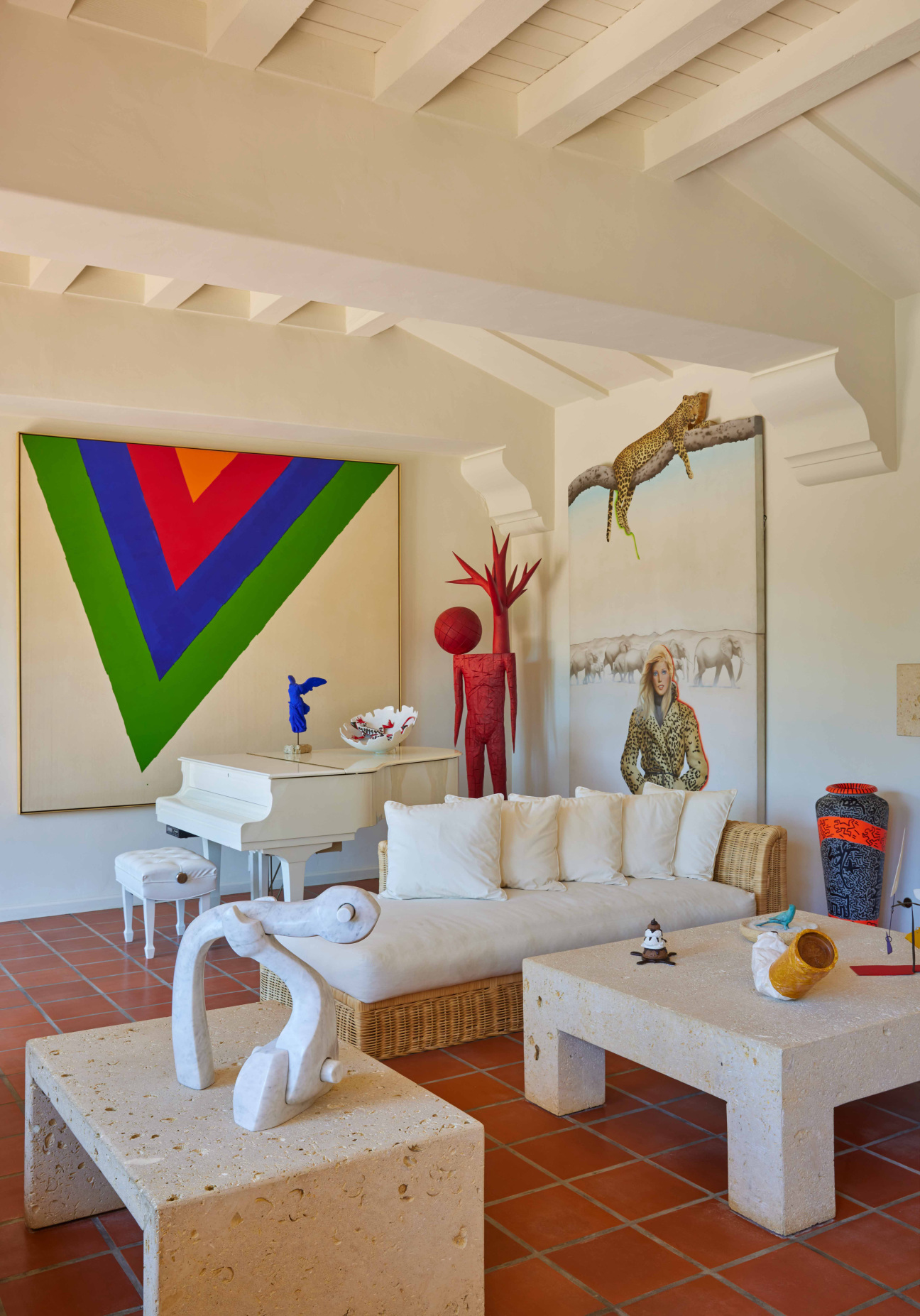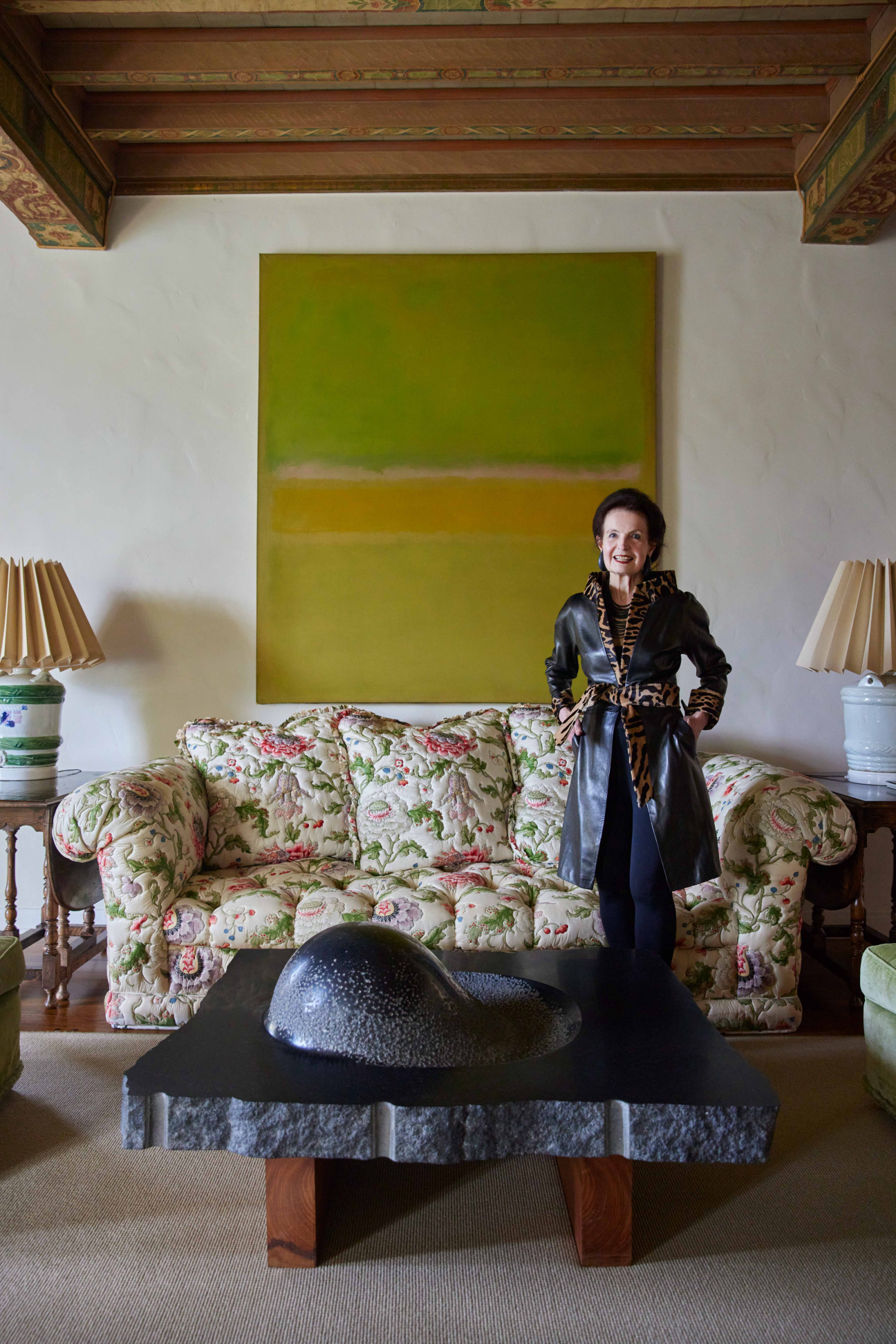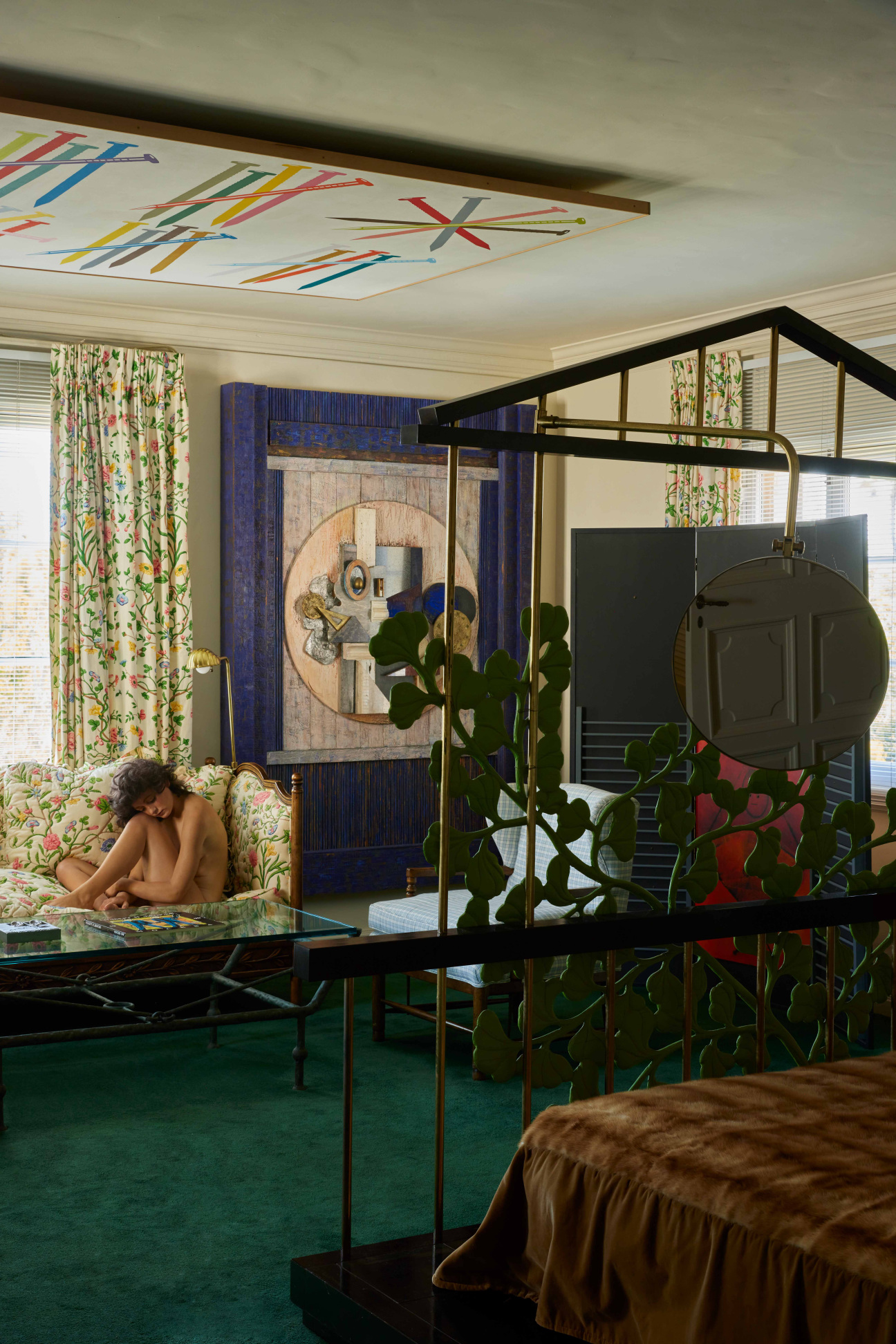
In 1982, Frederick R. Weisman purchased a historic Mediterranean-style villa in the leafy Holmby Hills neighborhood of Los Angeles. Together with his wife, the curator Billie Milam Weisman, the entrepreneur and inveterate art collector moved more than 400 works into the historic space, transforming it into a living homage to modernist, postwar, and contemporary art. Today, Billie helms the Frederick R. Weisman Art Foundation, making its holdings—which include works by Pablo Picasso, Robert Rauschenberg, Isamu Noguchi, Willem de Kooning, Helen Frankenthaler, and Ed Ruscha—available to the public through daily tours and loans to museums across the world. For this issue, Billie speaks to Larry Bell—the contemporary artist whose glass cubes she first encountered as a curatorial assistant at the Los Angeles County Museum of Art—about the city that defined their careers.
CULTURED: How did you two first cross paths?
Larry Bell: It was before the Punic Wars.
Billie Milam Weisman: Larry, my first encounter with you was with your work, when I started at LACMA in the late ’70s. Years later, Fred [Weisman] and I drove to Taos to visit you. The only directions you gave me were, “Hang a right at the pile of rocks.” I found the pile of rocks, hung a right, and ended up at your neighbor’s. He was a pre-Columbian art dealer who I happened to know, and he showed me the way.

CULTURED: Describe the Los Angeles art scene at that time.
Bell: My closest friends were Ken Price, Ed Moses, Craig Kauffman, and that gang. We lived in Venice and kept each other amused outside the commercial gallery scene. The most interesting galleries at that time were Ferus Gallery, the David Stuart Galleries, and Virginia Dwan’s gallery. Nicholas Wilder was an important personality in the scene. He had a gallery on Santa Monica Boulevard.
Weisman: It’s important to remember that Los Angeles didn’t have a major art museum until 1961, when LACMA opened. Before that, there was just the Natural History Museum [of Los Angeles County]. Then the Museum of Contemporary Art opened, then the Geffen Contemporary at MOCA, and now the Broad. Once the museums opened, our artists really started rising to the top. Before all that, galleries must have been where the arts blossomed.
Bell: The truth is, as artists, our excuse for being social was drinking beer with friends in their studios, looking at their work, and talking about it. We never got too precious about the work. Our relationships were based on humor—that was the glue that really held everybody together.

CULTURED: Billie, what did you admire most about Larry’s work? How do you understand its staying power, given your background as a curator?
Weisman: I’ve always been impressed with Larry’s innovation in introducing the reflective qualities of art and the light it emits. He’s taken this focus to different mediums—canvas, paper, and three-dimensional cubes and large sculptures, which he’s done more in recent years. I think what connected all of the artists in that movement was the use of light, just like the impressionists in the South of France. Larry probably epitomizes that more than almost any other artist of that time.
CULTURED: Larry, as an artist, did you ever feel drawn to New York over Los Angeles?
Bell: We were all curious about the amount of action available to New York artists. It was a fantasy land in a weird way—there were many more galleries and museums at their disposal. There was no real art market in Los Angeles in those days. I don’t think any of us really thought there was going to be any money in what we did, although we certainly aspired to make a living from our work, which is everybody’s right. But making a living and making art are two separate acts.
Weisman: It seemed to me that New York artists didn’t communicate with each other like the LA artists did. You were all in constant communication. Did you see that camaraderie in the New York artists?
Bell: Absolutely. The first people I met when I went to New York were Frank Stella, Donald Judd, Larry Poons, and Richard Serra. You could go to a restaurant like Max’s Kansas City and sit down with people like Willem de Kooning and William S. Burroughs. There wasn’t really a place like that in LA in those days, maybe with the exception of Barney’s Beanery. They had access to the important curators, who wanted to be around interesting artists, so the scene was more mixed there. When Andy Warhol and his gang of crazies came to LA in 1962 for a show at Ferus, everybody was thrilled to host him. When I had my first show in New York, he threw a party for me at The Factory.

CULTURED: Billie, what drew you to the artists that you collected?
Weisman: I had just finished a graduate degree in art history when I met Fred. He taught me what I could never learn in school: to trust my passion. You can’t collect because of a trend or because it’s “the right thing to do”—you have to truly believe in the artist. That’s how I learned to look at art properly. Before that, I was looking for what I was supposed to see.
Bell: I agree. There are four tools that every artist needs: improvisation, intuition, spontaneity, and, most importantly, trust. You have to trust what you’re doing and flow with it.
Weisman: Those tools shine through to a person who’s collecting for the right reasons.
CULTURED: Larry, how do you decide whether or not to trust in a collector?
Bell: I never trust a collector. I never trust an art dealer, either. Of course, Fred and Billie were big-time collectors and very giving people. When Fred traveled to New York, he always offered us artists a ride on his plane. I remember going [to his house] one morning and seeing a crew of people rearranging his paintings. I was impressed with how much he cared about the work he collected.
CULTURED: What made your relationship evolve past a transactional artist/collector dynamic?
Bell: The motivations for collecting are so varied that it’s hard to put your finger on anything but the generosity of the collector in welcoming all people to share their treasures. The Weismans threw incredible parties—if [someone like] Ellsworth Kelly was in town, they always invited local artists who could benefit from meeting them.
Weisman: Collecting is for the enrichment of your own life, but it comes with a responsibility to share. When artists make work, it becomes their baby. When we took on the responsibility of caring for an artist’s baby, we understood the responsibility to not only maintain it properly, but to share it with the public.

CULTURED: What do you think is the role of art in public life?
Weisman: When I purchased my first piece of art, I had the urge to hoard it because I treasured it so much. Now, I’ll pull pieces from the walls of my own home and add them to exhibitions across the world—not because it has our name on it, but because I’m so proud that other people get to see them. It’s a wonderful feeling, and art can teach everybody, no matter their discipline in life, to be more open-minded.
Bell: Billie, please take care of yourself and stay around for a long time, because you’ve done a lot of good. I’m a collector myself—I have nearly 500 12-string acoustic guitars, and I think of them as sculptures that sing. Each has its own personality; I feel great joy from holding, playing, and possessing them. That feeling must be similar to Billie’s passion for art. They make me feel whole, and that’s what art is all about. Nothing but feeling.
Videography by Rhys Carlill










 in your life?
in your life?

